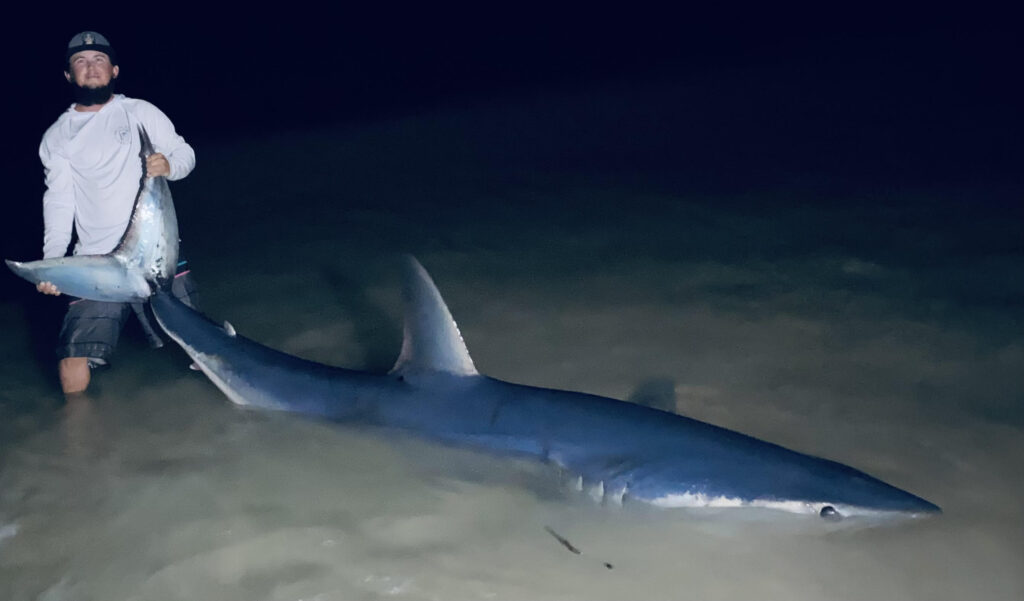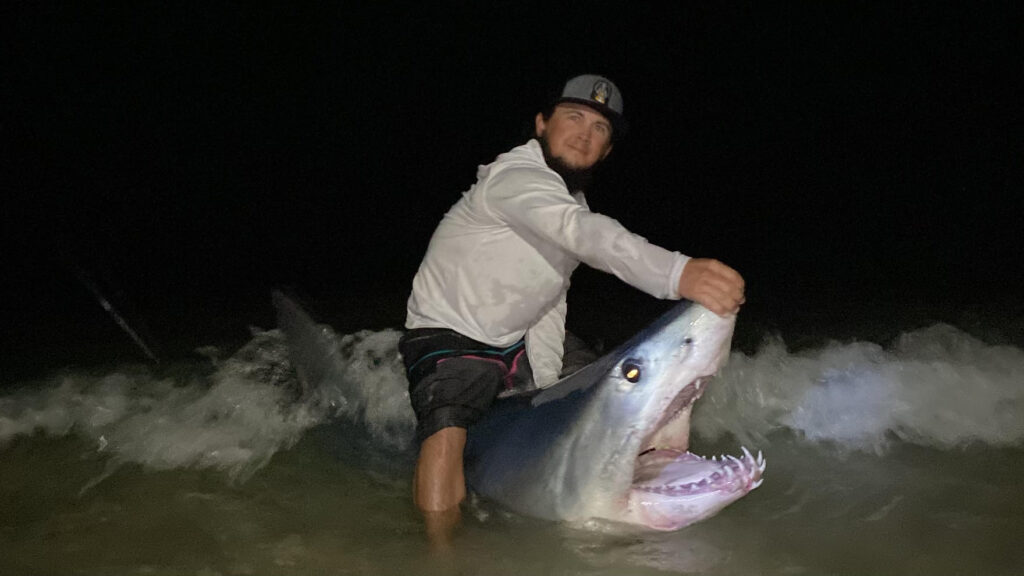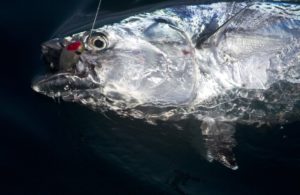
Three anglers were standing in neck-deep water off a beach on the Florida panhandle, being circled by a 12-foot shark—the kind of shark that makes its living attacking swordfish, tuna, and other sharks. It was the next-to-last moment in a beach-fishing adventure none of them will forget, and it ended safely for all of them, including the shark.
On November 12, Travis Lucas and friends Joshua Smith and Ben Brandner caught and released a very large shortfin mako shark from the beach. It’s exceedingly rare to catch a mako from shore; they prefer deep water and the larger prey that live there. This was the first confirmed shore-caught mako at Cape San Blas, about an hour east of Panama City. The shark was released per the rules; harvesting Atlantic mako sharks has been prohibited since 2022 due to overfishing.
Lucas, Smith, and Brandner never expected to catch a mako, let alone one that’s about as big as they get. “We usually just target big species, like bull sharks,” Lucas recalled. A week earlier, they had caught a 12-foot dusky shark and a 13-foot great hammerhead.
The Hometown Sharkers Score Big
The group, “Hometown Sharkers” on their social media, specialize in overnight beach outings.
Lucas was set up with an Okuma Makaira 130 reel spooled with 200-pound Reaction Tackle braid, a 300-pound mono top shot, and a homemade 800-pound leader on a 7-foot Rainshadow rod. The 24/0 circle hook was baited with a chunk of a blacktip shark caught earlier in the day.
Lucas had dropped the bait from a kayak about 1,000 yards offshore at sunset and paddled back to camp. During the evening, “we ended up catching a smaller bull shark on another rod,” he said. After that, it was a calm, cool night on a quiet beach—until it wasn’t.
“We had actually dozed off,” Lucas said. “I woke up to the 130 screaming.” He got into his harness and immediately knew the fish was heavy, perhaps a tiger shark. “It started pulling pretty significant drag pretty effortlessly,” he said.
Ten minutes in, the fish “woke up” and began leaping in the moonlight, “pretty much back-to-back for three or four minutes in one position, and then again in the next,” Lucas said. Eventually, the acrobatics ended. The fish ran toward shore a couple of times, which made life easier for Lucas, and the fight was over in 35 minutes.
As the fish neared the beach, the anglers still didn’t know what they had caught. Maybe a hammerhead, they thought. When it reached the wash, they thought it may have been a great white. When they finally got a light on it, “there was a lot of screaming,” Lucas recalled.
Team Release

“Releasing that fish was one of the most memorable situations I’ve had,” he said. “We realized it was a mako. Josh runs out with the tail rope. I come out with bolt cutters and the hook remover. We get out there, assess the situation, get it unhooked, get the leader off of it. It was about 49 degrees, it was cold.”
Lucas’s wife, Flower, and the other guys’ girlfriends watched and held flashlights from the beach. The group began moving the mako to deeper water to ease its release. “So it’s pitch black outside. We get out past the sandbar, so we know she can swim off. She swims out 10 or 15 feet and comes back at us. She made three full circles around us before thrashing at the surface and then swimming off. It was definitely nerve-wracking.”
The group saw for themselves why makos are sometimes confused with, blue sharks. “They are in every sense of the word ‘blue sharks’,” Lucas said. “When the light hits them they’ll go from deep purple to blue, and it’s a color you’d never expect to see from an animal. It almost seems like it’s a holographic. They’re pretty wild looking. It’s definitely a once in a lifetime fish.”








